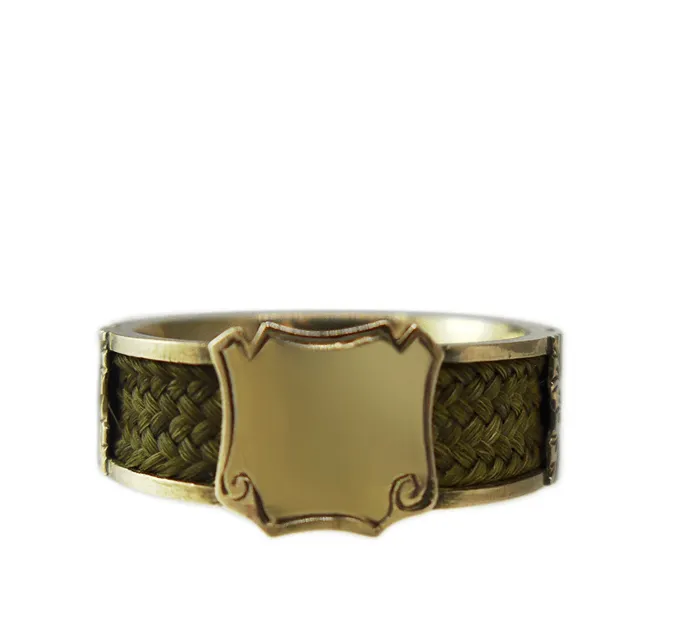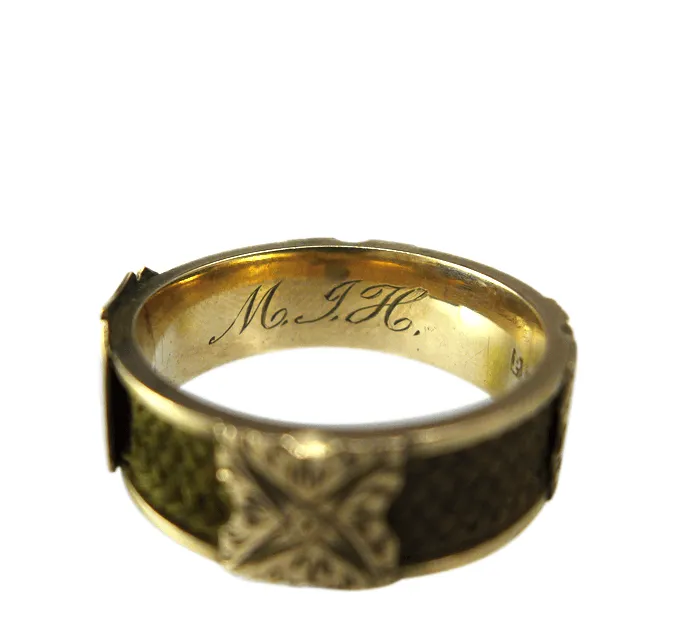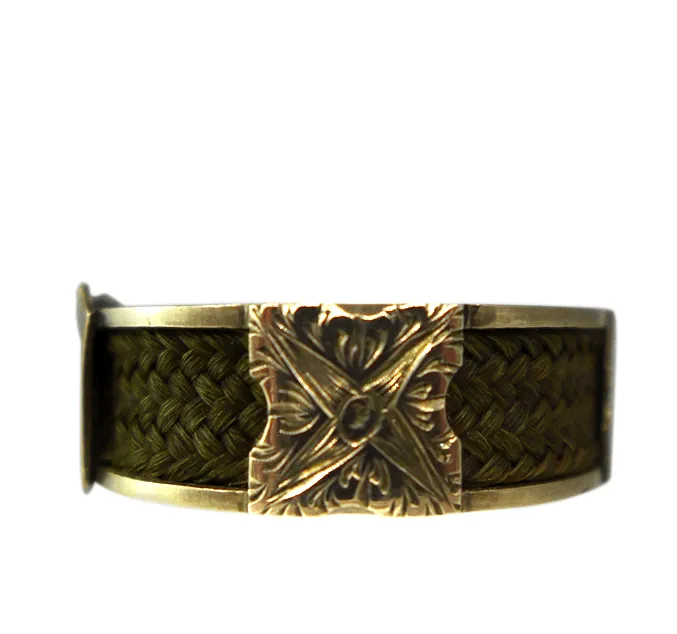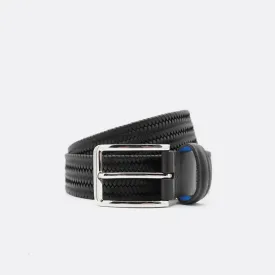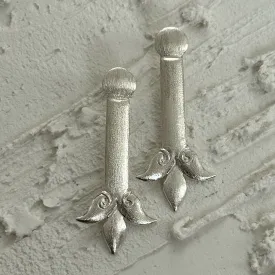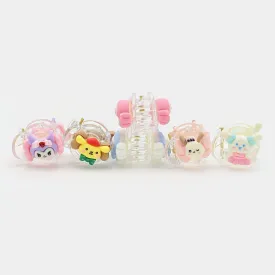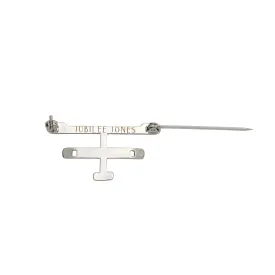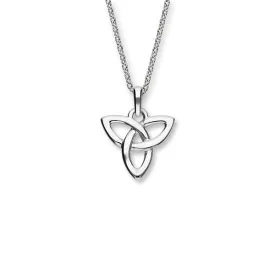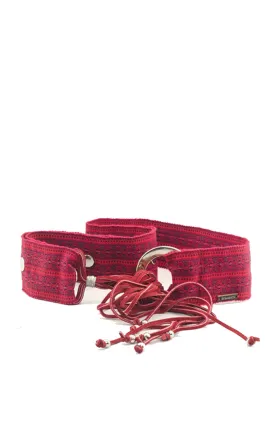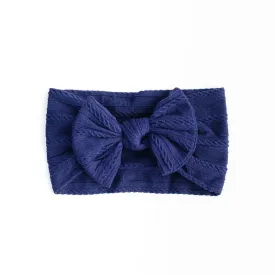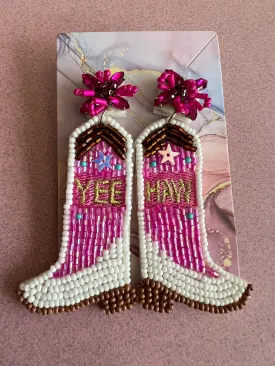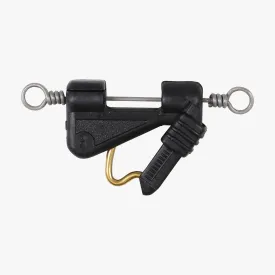- Specifications
- Description
- History
Circa: Victorian
Material: 9ct Yellow Gold
Handmade
Ring Size: R
* This ring unfortunateley cannot be resized due to it containing braided hair which will not withstand the resizing processA Victorian gold and hair mourning ring. The 9ct yellow gold band features three engraved squares and one plain shield encasing braided hair. The inside of the band is engraved with the initials ‘M.J.H’.
Mourning jewellery rose to prominence during the Victorian era particularly after the death of Queen Victoria’s husband, Albert. Hair was a material incorporated into most mourning jewellery as it symbolised the love between two people and was meant to keep the dearly departed close to ones heart.Victorian Period (1837 - 1901):
The Victorian Period defined by none other than Queen Victoria herself, had three stages - the Romantic, the Grand and the Aesthetic. It was during the Romantic era that Queen Victoria married her Prince, Albert. Sentimental motifs such as; hearts, lover’s knots, flowers, bows, crescent moons and particularly serpents (which was subject to Queen Victoria’s engagement ring which represented enduring love) became extremely popular in jewellery design. Cameos, Enamelling and the use of bright coloured gemstones such as; garnets, amethysts, turquoise, pearls and diamonds gave way to the creation of jewellery that was beginning to speak a symbolic language of its own. The Grand era was a sombre period which saw Queen Victoria mourning the death of her beloved husband Albert. It encompassed 20 years during which time Victoria would only wear black and mourning jewellery. As a result the Whitby Jet industry flourished and onyx and deeper coloured garnets rose in popularity. Rings, lockets and brooches were commissioned with compartments for a lock of a loved one’s hair and were often engraved with the person’s name, age and date of death. The Aesthetic era saw a return to the light-heartedness of the Romantic Era. The discoveries being made through archaeology led to an Etruscan Revival with Greek, Roman and Renaissance influences becoming apparent in jewellery design as well as symbols of good luck and fortune.




